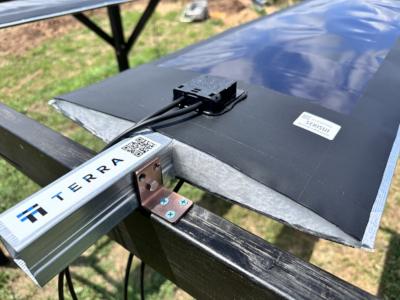Researchers use a bidirectional coordinator to achieve efficient and stable perovskite solar cells
Researchers from Korea's Ulsan National Institute of Science and Technology (UNIST) have addressed critical challenges in perovskite solar cells (PSCs), significantly enhancing both their efficiency and stability. The team achieved precise control over ion arrangement and reduced structural irregularities by incorporating a bidirectional coordinator between the perovskite photoactive layer and the electron transport layer.
Image credit: UNIST
The research team introduced trifluoroacetate (TFA-) ions between the perovskite layer and the tin oxide substrate, which serves as the electron transport layer (ETL), to mitigate defects.









